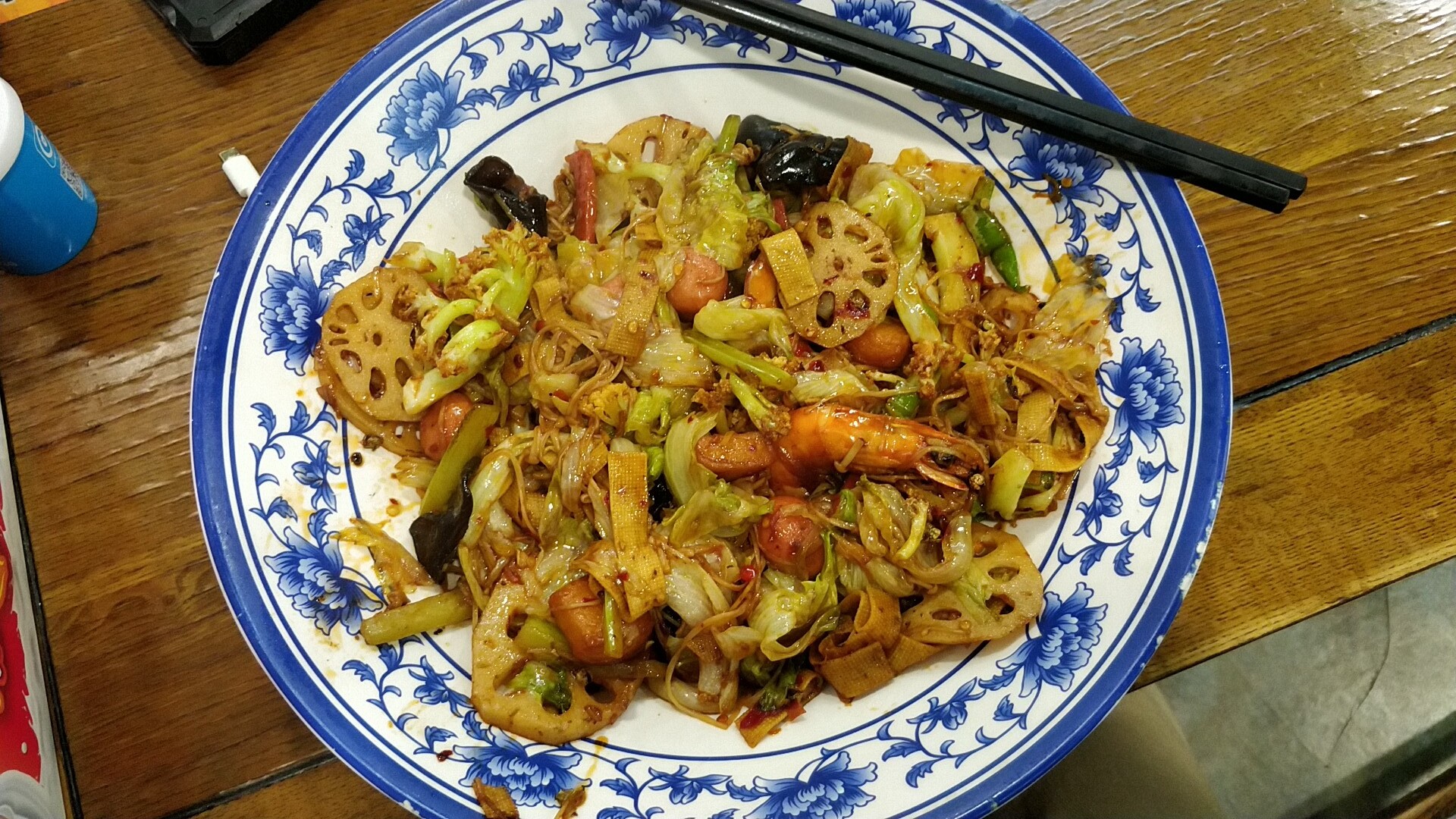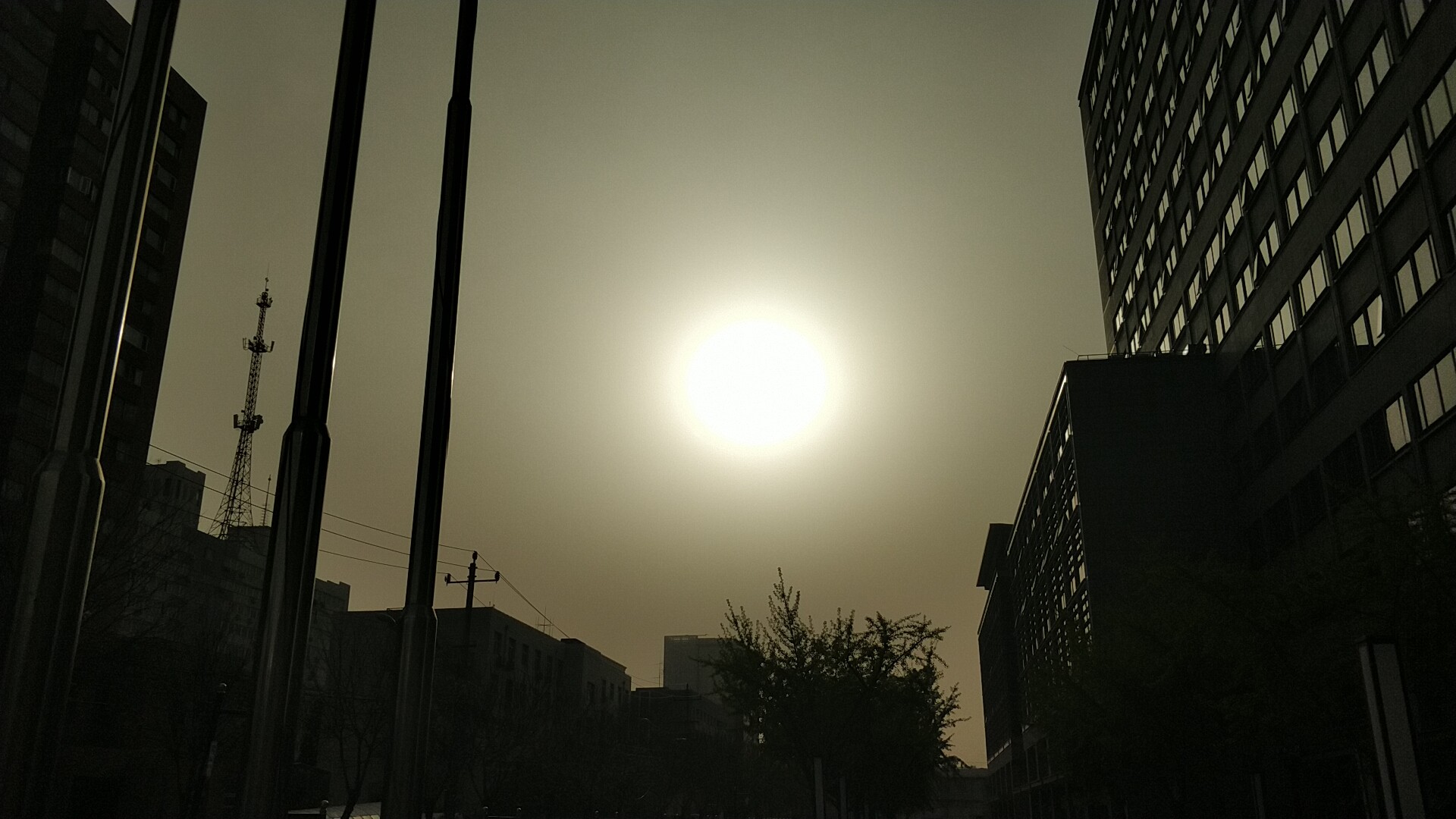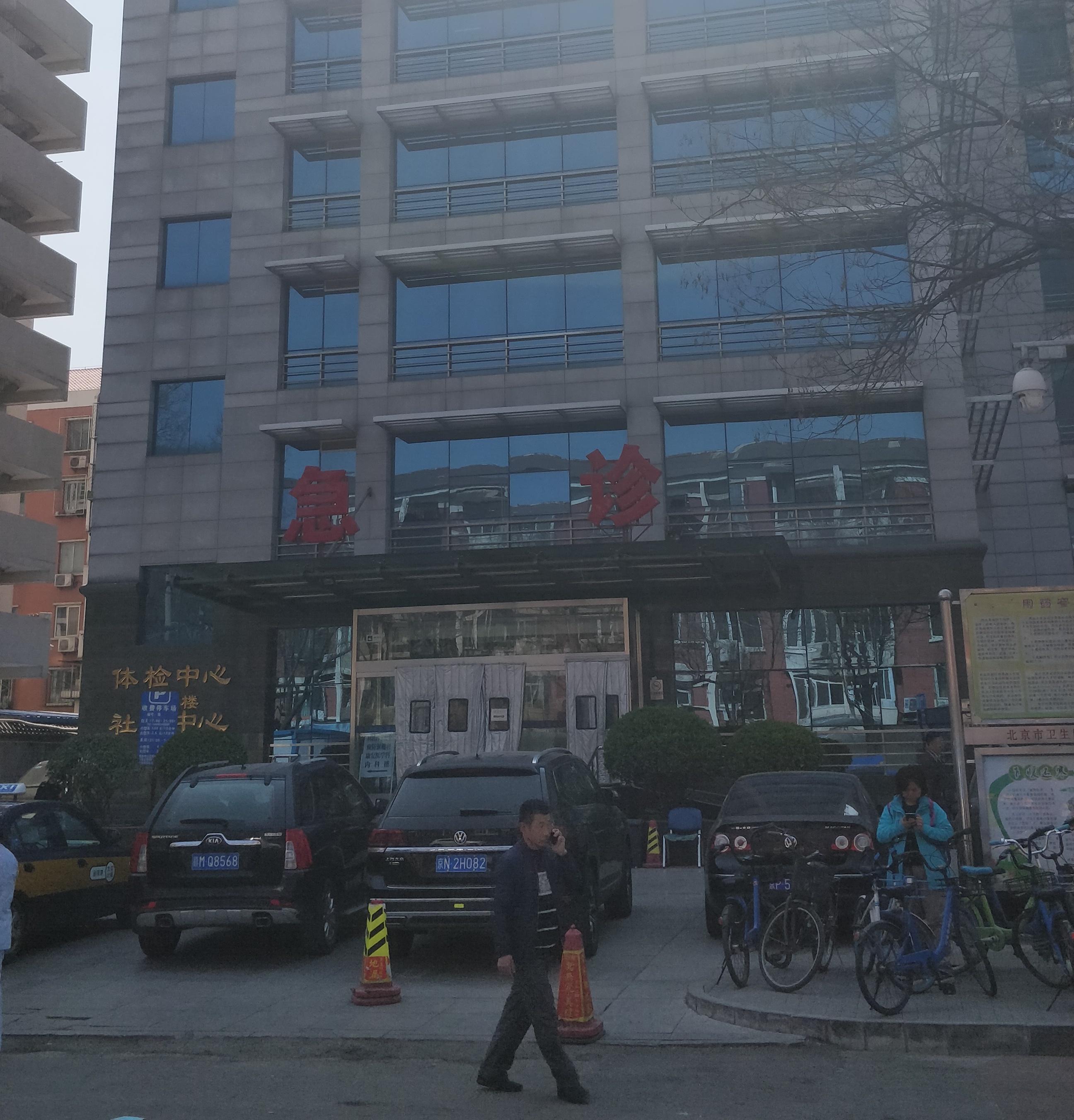SamInChina Presents: Navigating a Hospital
7 April ’19
Something in this city is killing me. I’m tired all the time. I sleep from midnight to ten every day, and yet when I get up in the morning and look in the mirror there are still dark circles under my eyes. I have a couple of hypotheses. The first is that exposure to my second language all day every day tires me out. If I knew zero Chinese my brain would just filter it all out, but since I’m learning the language it’s always processing bits and pieces that I come across. The second is the pollution. I didn’t know this before coming to Beijing, but apparently air pollution makes you tired. Doesn’t seem to have an effect on the natives though 😂 The third is the food. When I’ve told some friends about my exhaustion the first thing they all pointed to was the food - after all the staples are rice and noodles. Beijing in particular, they say, tends to load meals with oil and sugar.

麻辣香锅 (malaxiangguo "numbing spicy fragrant pot") a delicious dish, but loaded with oil.
Besides the mental exhaustion there’s also the physical weakness.
The first time I felt like I was going to collapse was in a metro station. I was meeting a friend for dinner at a Mexican place - or what they pass for Mexican food here in Beijing (seriously I could make it myself at home). I had only had a small lunch of just one or two 包子 (baozi “steamed buns”, my favorite cheap snack) which I didn’t expect to cause a problem. I’ve always been able to trust my body - one time I fasted for 72 hours straight without once ever feeling weak knees. But there I was, at the exit of the subway station, convinced that if I remained standing any longer I would fall over. Fortunately all the metro stations have vending machines that take WeChat pay, so I stumbled over to one of those and tried to order the healthiest looking drink possible. It turned out the picture of the orange on the label was an indication of the flavor, not the actual contents. Still, after guzzling down half a can of pure sugar, I felt much better. My friend showed up and we headed to the restaurant. I filed the experience away as an anomaly and didn’t worry much more about it.

The air quality index hit over 500 the other day. This photo was taken at around 4pm and is unedited. For reference, 0-50 is "good", 50-100 is "moderate", 100-150 is "unhealthy for sensitive groups", 150-200 is "unhealthy", and 200-300 is "very unhealthy". The US government doesn't even bother assigning labels past 300... (source)
Then it happened again. And again. And soon anytime I went out to explore the city I would bring sugary snacks with me to combat the weakness when it inevitably showed up. “Something in this city is killing me” I told my friend, and described my symptoms. “Wow” she said “that sounds a lot like diabetes.” Naw. I can’t have diabetes. That’s absurd. I’m too young!
“Something in this city is killing me” I told my dad on our weekly phone call, and described my symptoms. “Wow” he said “that sounds a lot like diabetes.” Well if my DAD says so, I guess… maybe it’s possible.
So I went to the hospital.
China is not the US which means that it’s healthcare system is actually reasonable. Although there have been more and more western style family clinics springing up over the past few years (especially in Beijing), the Chinese model of healthcare seems to revolve around hospitals. The word hospital sounds alarming to those of us who grew up in the United States (and probably in the west in general ?), as a hospital is where one goes only for very serious emergencies. But the Chinese word for hospital, 医院 (yiyuan), translates literally as “medicine compound”, which is far less aggressive. There is an emergency room, but rather than being a whole ward it’s just two small rooms tucked off to the side (at least in the hospital I went to).

My hospital of choice. The characters here are "急诊" (jizhen) which means "Emergency".
I purchased an international health insurance before going overseas, but I got the cheapest option which almost certainly wouldn’t cover a preventative test. I didn’t even bother calling them to check because, as previously mentioned, China is not the US, which means that prices trend towards reasonable rather than outrageous. So I figured I’d just pay out of pocket. At first I thought I would need to pay for a whole body checkup, but later discovered that I can order and pay for just a standard blood sugar test, which is used to diagnose diabetes.
But enough backstory. Here’s the official SamInChina guide to navigating a Chinese “hospital”:
- Find the hospital. There was one I passed every day on my way to work, so I just went there.
- Enter the hospital. I used the door closest to the street, which it turned out lead to the emergency room.
- Wonder where everyone is.
- Wonder how to get help.
- Try and fail to use a self check in machine.
- Follow signs for information desk.
- Ask the guy manning the desk if he speaks English.
- He does not.
- Realize that you’ve shown up during everyone’s lunch break, as he is currently eating an instant ramen.
- Ask him about getting your blood drawn, explain that you want to get tested for diabetes.
- He tells you to go talk with a cashier in the next room over.
- Tell the cashier that you want your blood drawn, to get tested for diabetes.
- The cashier responds that they don’t have blood drawing right now, they only have something you can’t understand.
- Ask cashier to repeat herself.
- Cashier seems to think twice, then asks for your passport.
- Provide photocopy of passport.
- Pay 50RMB (about $7.50) and receive a ticket.
- Be told you need to go all the way down, take a left, go all the way down again, and present your ticket.
- Go all the way down, be about to turn left, then see the blood drawing room.
- Assume you misheard directions. Enter blood drawing room. Give nurse your ticket.
- Be told you need to turn left and go all the way down.
- Exit blood drawing room, turn left, and go all the way down.
- End up back at the emergency room. Realize that the cashier was probably trying to tell you that right now, during lunch hours, they only have emergency room service. Realize that you were probably charged extra for emergency room service. Shrug, as it was only $7.50.
- Enter emergency room and supply nurse your ticket. Explain that you want to have your blood drawn in order to test for diabetes.
- This nurse is the first person to ask you why you want to get tested. She emphasizes that you are very young, you probably don’t have diabetes. Use your limited Chinese to explain your symptoms, and reassure her that you’d rather just check anyways.
- Listen to nurse explain that they have two different tests, the needle-prick device that diabetics use to keep track of their blood sugar, and a full blood draw. The needle prick they can do today, but isn’t 100% accurate. The full blood draw they can do Thursday at 8-9 am (😱 despair, as you usually wake up at 10 am) and is conclusive.
- Nurse writes you up an order form.
- Trudge back to cashier. Pay another 120RMB ($18).
- Trudge back to emergency room. Have finger pricked and blood tested. Blood sugar contents look fine.
- Thank nurses and leave.
- Come back Thursday at 9 am.
- Go to blood drawing room.
- Be told (again) that you should go to the emergency room.
- Realize you were probably charged on emergency room surcharge on the blood draw as well.
- Go to emergency room and give the nurses your ticket.
- Have blood drawn.
- Be handed YOUR OWN VIALS OF BLOOD and told you need to take the one with the red cap to the lab on the first floor and the one with the purple cap to the lab on the fifth floor.
- Take blood to first floor lab.
- Be told that both vials need to go to the fifth floor lab.
- Wonder why the emergency room nurses don’t seem to have been informed of this.
- Climb stairs to fifth floor. Ponder how absurd it is that you are walking around with vials of your blood. What if you had some bad communicable disease? What if you tripped and the vial broke open? You’re pretty sure that there’s a good reason why the nurses do all the handling of samples in America. But at the same time, you suppose that having patients truck around their own materials is much more efficient. If your goal was to process as many people in a day as you could, this would be a good measure.
- Make it to the fifth floor. Give blood to lab.
- Be told to come back in an hour and a half.
- Finish walk to company. Work for an hour. Walk back to hospital.
- Receive results!
In the end my fasting blood sugar level was 5.01 mmol/L. For reference, 5.6mmol/L to 7 mmol/L is pre-diabetic, and 7mmol/L or higher is diabetic. Which means I’m fine! A happy ending to this lighthearted guide 😁

I tried eating healthier by grabbing only veggie dishes from the cafeteria...
Of course, that means I still don’t know what is causing my weakness. But during my diabetes scare I pre-emptively started cutting excess sugar out of my diet just in case I did turn out to be at risk, and after a week of not drinking boba every day I started feeling much better. I’m also taking other measures. I found the salad bar at Microsoft so I’m eating more veggies (when I told my roommate I eat salad every day for lunch now he cracked up and said “you crazy foreigners”) and I’m also making sure I’ve had enough for lunch on days I go out exploring. I wear my pollution mask every time the air quality index gets over 50 (which is almost every day), despite all of the locals being too cool to do so. Other things are trickier. I don’t have a kitchen in the unit that was rented for me, so I can’t eat as healthy as I’d like. And my roommate, despite doing his best to keep quiet in the morning when he gets up, still disturbs my sleep every day.

...but in the end the salad bar was much tastier 😁
Fortunately I only have about one more month of my internship as I’ve just about had my fill of Beijing. It was an excellent introductory city - friendly to foreigners, lots of landmarks, cuisines from all over China, plenty of activities to practice my Chinese - but I’m really looking forward to trying out somewhere warmer and less polluted. My hope is that with longer days, cleaner air, and lighter food I can have more energy to write blog posts for you guys 😘 Not to mention not having to go to work eight hours a day!